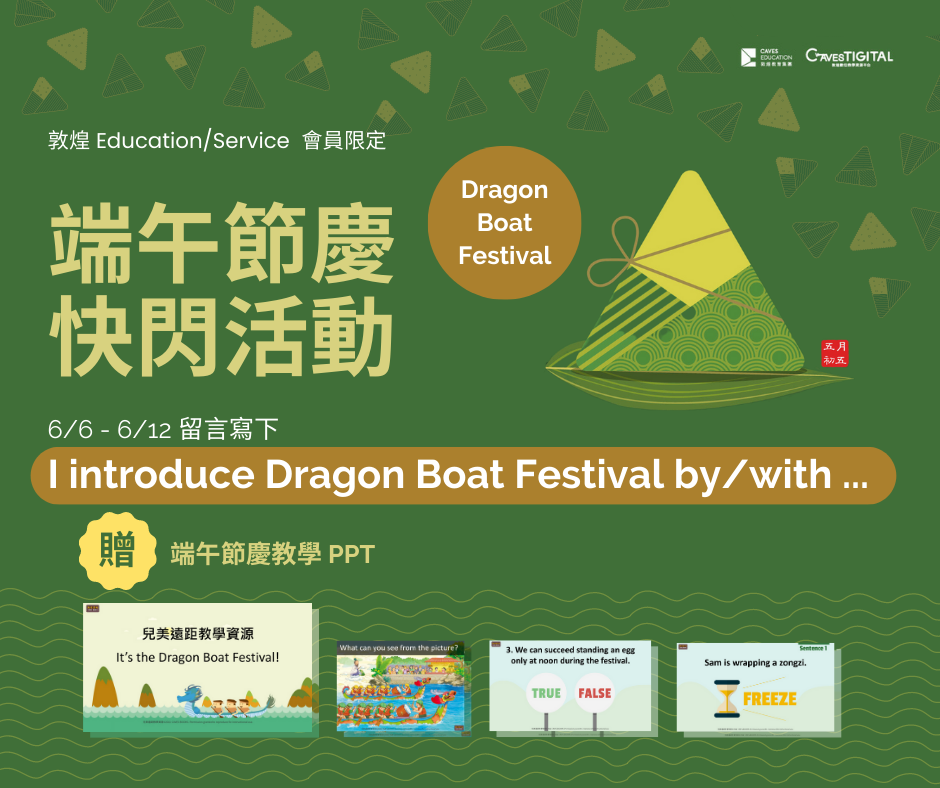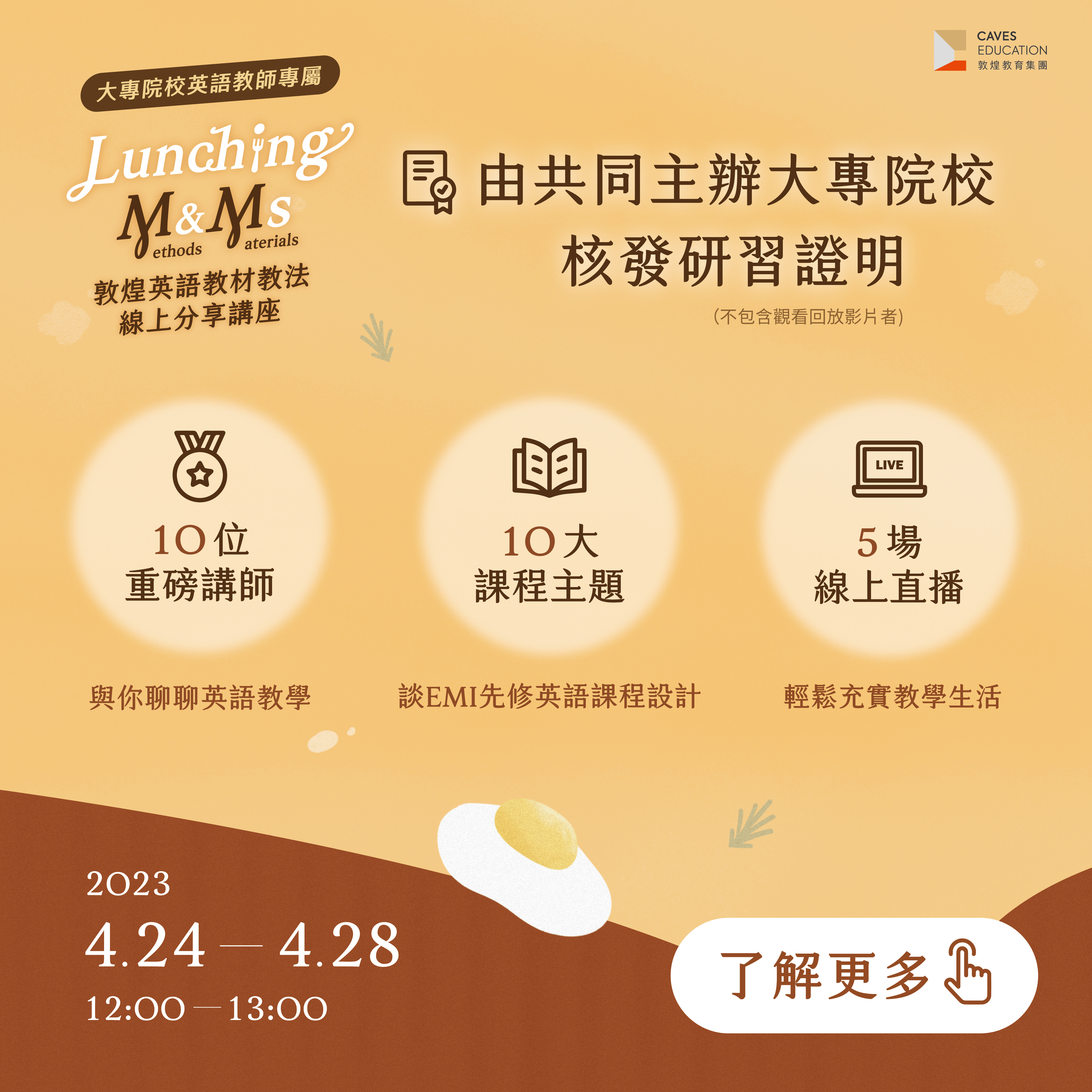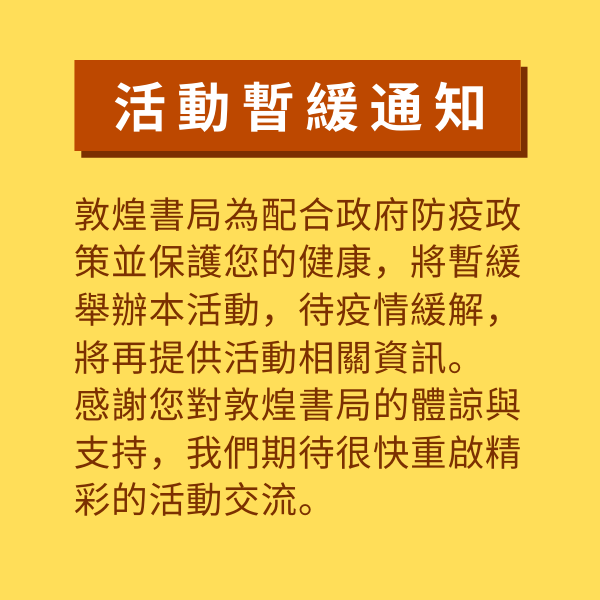
有沒有想過我們是如何獲得一種語言?語言習得代表什麼意思?第一語言習得和第二語言習得之間有區別嗎?大部分的人都能說一種語言,有些人能說多種語言,但大多數人甚至沒有想過是如何學習獲得這些語言的。
事實上,第二語言有兩種習得方式:第一種是「同時雙語」(simultaneous bilingual)、第二種是「依次雙語 」(sequential bilingual)。同時雙語的意思是自孩子出生起,家長兩方(或兩個主要照顧者)同時用不同的語言和孩子溝通;依次雙語則是孩子已經習得第一語言後再發展第二種語言,如果孩子在3歲以後才開始接觸過第二語言,通常稱為依次雙語習得。大部分台灣學生在學習英語上是依次雙語方式,接下來將針對此做介紹:
依次雙語習得五階段:
1.沉默與接受
在這個階段的學習者需要大量的時間來學習新語言的詞彙。主要透過觀察語言與環境的交互作用,來獲得第二語言的理解。在此階段建議老師提供豐富、有意義的語言,並且提供視覺和具體的事物,來幫助學生理解新的詞彙和語言。
2.早期產出
此時,幼兒開始「收集」新的單字,開始說一些單詞或單詞組合的片語。在此階段,兒童能夠試著理解圖畫、書籍…等材料,因此教師可讓學生們閱讀帶有插圖的簡單書面文字,以幫助他們理解。這時候的孩子對於文字會非常感興趣,在讀的時候,建議可以用手指著文字,邊指邊讀。
3. 第二語言出現
當學習者進入第三階段時,他們已經收集了數千個單詞,這是相當令人激動的階段,因為兒童開始會試著將這些學到的單詞組合成片語和句子來溝通,也就是和使用第二語言真正產生「聯繫」,這種聯繫會增加對新語言的理解。教師此時可提供有意義的、功能性的教學設計,讓學生表達自己(例如:口說或寫作的活動),帶領孩子從詞彙組合延伸至句子發展。
4. 中等流利
當孩子開始使用連接詞(如 and, or 和 but,或是 because 或 so)時,他已經開始學會使用複雜句子進行交流。這是第二語言習得的重大階段,因為他們已經開始出現使用二語言思考的能力。教師應該大量給予學生進行「敘事」的機會,包含描述事件、個人想法,或是情感狀態,讓他們大量練習使用第二語言來表達自己的想法和感受。如此的表達對於兒童個體而言是有目的與意義性的,能夠有效的幫助加深加廣第二語言的能力。
5. 持續的語言發展
到了這個階段,第二語言的學習會進入一種高原期,學習者在此時已經掌握了一定的知識,也具備了一定能力。請注意,這些階段可能會持續一段相當長時間,因為第二語言學習者在此階段會繼續發展語言,並通過增加複雜性以及與社會交互作用,來調整第二語言的準確性。這時候教師可以繼續提供練習,鞏固持續精進的語言能力,並且給予精準的語言使用,讓學生掌握住精確的用語(collocation)。
利用開放性的提問增加兒童的語言理解與字彙量
在第二語言教學的初期,提供兒童結構與半結構性的語言將有助於語言的獲得。封閉式問題,獲得簡單的「是」或「否」的答案,可以幫助孩子確定學習的語言意義,也能幫助教師理解孩子的學習情形。但一當孩子已經擁有些許詞彙時,應使用開放性的問題,能夠構建更多的內容的理解,包括更多訊息、描述、角色、設置、位置、場景、感受和解釋等。運用開放式提問,可以引導孩子在建構答案時運用更多的思考,並連結自己的感知和所運用的語言。
依自身教學經驗,在課堂中會利用下列開放式的問題,一方面確認自身教學進度、一方面建構孩子對於 STEAM 的理解,如:
- Why do you think…
- What if…
- How did that…
- Which element would likely…?
- What might…
如果是利用繪本閱讀幫助孩子習得第二語言,也可以運用開放式問題,幫助孩子了解場景、了解角色、幫助探索情緒、確認情節或在閱讀故事後進行討論。
閱讀前可以問:
- Looking at the cover, what do you think this book might be about?
- What do you think will happen in the story?
- Can you please describe what you think the illustration on the front cover is trying to tell us?
- Why do you think the author gave this book that title?
- What do we know about the story by looking at the cover?
- After reading the blurb, what is something you are looking forward to discovering in this book?
- How do you think this story will end?
- What is a problem that you think could occur in this story?
了解場景的問題,可以這樣問:
- What time of day do you think it is?
- Why do you think it is that time of day?
- What would be appropriate to wear here?
- What sounds do you think the characters may hear?
- What would you do if you went to this place? Do you think you would enjoy being here?
- Why do you think that item is there?
- What is something that is useful here?
- How many animals can you see?
- What do you think this place might smell like?
了解角色的問題,可以這樣問:
- Which character do you think this story may be focusing on?
- How much bigger do you think this character is to you?
- Which of these characters are friends?
- How do you think these friends met?
- Which character do you like the most and why?
- Which character do you like the least and why?
- What is another story we have read that this character may be suited for?
- Have you met anyone that reminds you of this character?
探索情緒的問題,可以這樣問:
- How do you think that character is feeling?
- If that happened to you, how would that make you feel?
- How could we make him feel happier?
- What do you think that character would have preferred to happen?
- When have you felt the same way as the character?
- How do you think you would react if that happened to you?
- How do you think he will feel by the end of the story
確認情節的問題,可以這樣問:
- Why did the setting change?
- If this was real, how do you think our lives would change?
- What has happened so far?
- How does this story make you feel?
- What do you think the ending would have been if this happened instead?
- Why do you think that happened?
- What would you do in that situation?
- As we are reading, what are you thinking about?
- What does that sentence mean to you?
閱讀後進行討論的問題,可以這樣問:
- What do you think of the story?
- What happened in the beginning, middle and end of the story?
- What part of the story do you think you will remember the most?
- What was your favorite part of the book?
- What was your least favorite part of the book?
- Was the book how you expected?
- What would you change about the ending if you wrote the story?
- What do you think the author was trying to explain in the story?
- If the author was to write another book using the same characters, what do you think it would be about?
以上的提問,都是為了培養兒童運用第二語言用來理解某事物的能力,而非建立單字量。有許多研究發現,孩子建立理解力會對往後生活中產生巨大的影響。因此,教師對兒童說話時,向他們提問、鼓勵深入的對話、使用開放式問題,不僅可以確認他們對您的內容是否感興趣,而且還可以理解該主題,對於第二語言的習得與世界的認識,有相輔相成的功用。
更多范雅筑 Sonya 老師好文分享:
作者簡介│范雅筑 Sonya
- 教育博士
- 托福iBT官方講師
- 微軟全球創新教育專家
- Little tinker 停課教育實驗室創辦人
參考書目:
De Houwer, A. Early bilingual acquisition. Handbook of bilingualism: Psycholinguistic approaches, 2005; 30-48.



 © All rights reserved, powered by
© All rights reserved, powered by 

